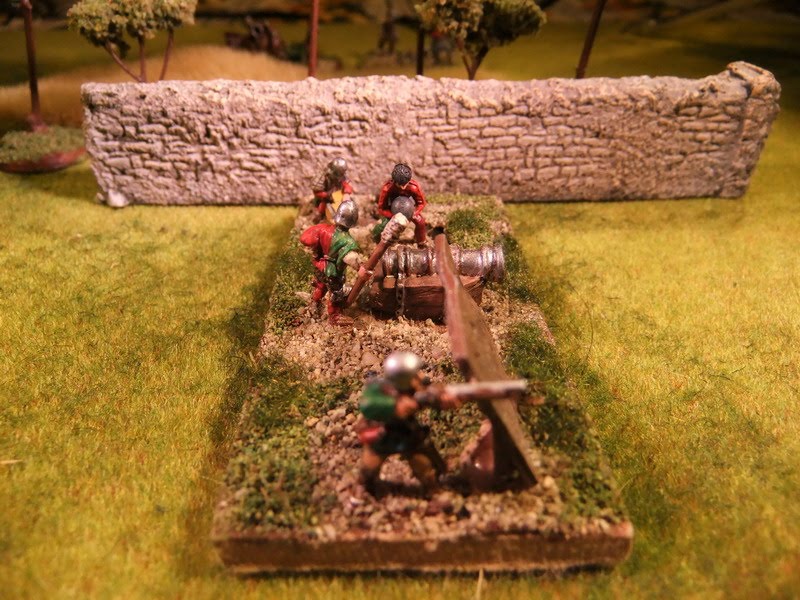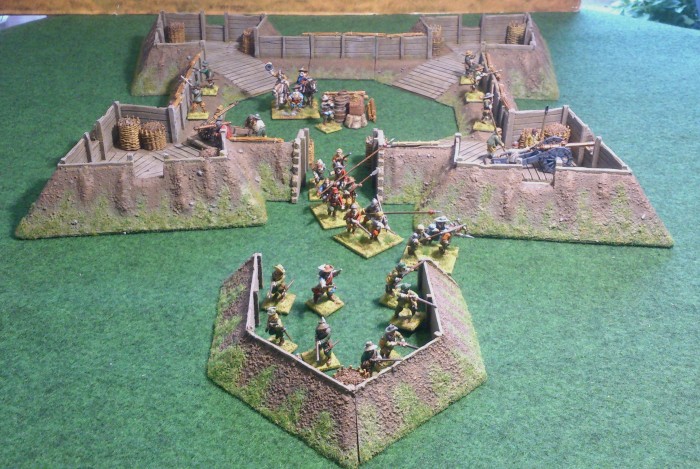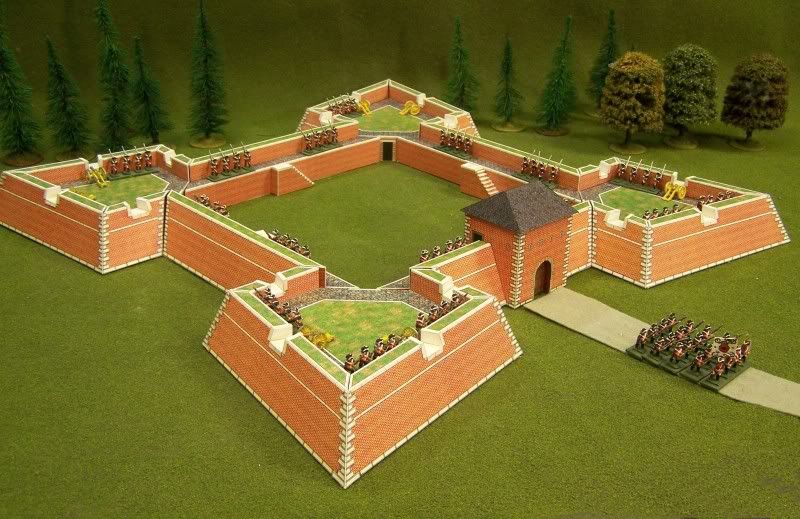 Sabbioneta is a town and comune in the province of Mantua, Lombardy region, Northern Italy.
Sabbioneta is a town and comune in the province of Mantua, Lombardy region, Northern Italy.  It is situated about 30 kilometres (19 mi) north of Parma, not far from the northern bank of the Po River.
It is situated about 30 kilometres (19 mi) north of Parma, not far from the northern bank of the Po River.  It was inscribed in the World Heritage List in 2008.Sabbioneta
It was inscribed in the World Heritage List in 2008.Sabbioneta sm.jpg) was founded by Vespasiano I Gonzaga in the late 16th century
was founded by Vespasiano I Gonzaga in the late 16th century (whence the name, meaning "Sandy" in Italian); he was its first duke, using it as a personal fortress and residence.
(whence the name, meaning "Sandy" in Italian); he was its first duke, using it as a personal fortress and residence.sm.jpg) (Aerial view of Sabbioneta. After the Victory gate of the town. ). If you have an interest in military history then the one place you would go before you go to all the famous touristic places is Sabbioneta (and of course Palmanove).
(Aerial view of Sabbioneta. After the Victory gate of the town. ). If you have an interest in military history then the one place you would go before you go to all the famous touristic places is Sabbioneta (and of course Palmanove).sm.jpg) It's called a ghost town by some but is nothing of the sort. Above are typical soldiers of the times.
It's called a ghost town by some but is nothing of the sort. Above are typical soldiers of the times.
.
It was also during this period that it became a minor musical centre; composers such as Benedetto  Pallavicino were employed here by Vespasiano Gonzaga, prior to his moving to the main Gonzaga city of Mantua.Main sights
Pallavicino were employed here by Vespasiano Gonzaga, prior to his moving to the main Gonzaga city of Mantua.Main sights
 Pallavicino were employed here by Vespasiano Gonzaga, prior to his moving to the main Gonzaga city of Mantua.Main sights
Pallavicino were employed here by Vespasiano Gonzaga, prior to his moving to the main Gonzaga city of Mantua.Main sights
Sabbioneta is also known for its Jewish Ghetto and Synagogue, and in particular for its Hebrew printing-
 press. In 1551 the press; , however, published certain "anti-Christian books" and its career was
press. In 1551 the press; , however, published certain "anti-Christian books" and its career was "forcibly ended". this work and possibly his type were taken up by a Christian printer,.In 2008,
"forcibly ended". this work and possibly his type were taken up by a Christian printer,.In 2008,  Sabbioneta was inscribed in the UNESCO World Heritage List as a recognition of its perfect example of practical application of Renaissance urban planning theories.
Sabbioneta was inscribed in the UNESCO World Heritage List as a recognition of its perfect example of practical application of Renaissance urban planning theories.
Renaissance Italy was populated with numerous important and innovative people. Lesser-known figures, however, also played a significant role in framing the discourse between politics, philosophic thought, art practice, and self-fashioning as a practical modus for change. Vespasiano Gonzaga (1532-1591), the duke of Sabbioneta, purposefully embodied such an aspiration. He also represented a new type of man, made popular by Baldessare Castiglione, a uomo universale. Such a type of man developed in the 15th century from a notion best expressed by one of its most accomplished representatives, that a man 'can do all things if he will.'he link between the ideality of the prince’s city and that of himself as a ‘constructed’ person will be explored, set against the backdrop of his interest in architecture, art, and his many years spent in Spain.
On a Sunday morning, I was chatting at breakfast with another traveler. He asked me if I had yet visited the unusual small city near Mantua called Sabbioneta. I had never heard of it. He said it was well worth a visit, being a showcase of idealistic architecture, and completely constructed in only one architectural style, the latesixteenth-century style called “Mannerist.”
Moreover it was entirely built during the reign, and under the personal supervision, of its sixteenth-century duke, Vespasiano Gonzaga, a man of singular erudition. He mentioned this to me, he said, because on Sundays, this very day, escorted tours were offered to the visiting public, since Sabbioneta had recently been restored to be almost as it was when originally built in the sixteenth century. I was intrigued. It would be only a bit of a detour, I realized it would have been under construction, with some of it completed, around 1573 or 1574 .Sabbioneta is about forty-five kilorneters—only twenty-five miles—southwest of Mantua, on Highway 420, and is still surrounded by its massive walls. I easily drove through the handsome fortified gate, Porta Vittoria, which stood welcoming on its western flank, noting the attractively paved interior streets, as I entered the little city. Straight ahead, I saw a small crowd of people standing in front of a building. I parked nearby. From the sign on the front of the building, I knew it was the local tourist office, and a smaller placard said this was the very hour for which a city tour was scheduled. I bought a tour ticket and was given a brochure entitled La Piccola Atena— ”Little Athens.” I also purchased a tourist guide in English, with full color pictures and a descriptive text of more than seventy pages. Our guide explained the carefully planned layout of the city’s streets and plazas, and she told us about the wealthy, enlightened duke who had built the city. He was Vespasiano Gonzaga Colonna (1531-1591), a member of the cadet branch of the powerful Gonzaga of Mantua. Vespasiano was born on 6 December 1531, in Forli, in the Papal State of Romagna. His father, Luigi Gonzaga, was an illustrious condottiere in the service of Emperor Charles V. Luigi, usually called “Rodomonte,” died when Vespasiano was only one year old. As a teenager, Vespasiano was sent to the Royal Court of Spain, there to acquire an education in both academics and military disciplines. In service to Philip II, he rose in rank to become experienced in warfare, then a commanding general, a viceroy, and builder in both Europe and North Africa. Vespasiano was an avid student of Vitruvius, the Roman architect and engineer who wrote De Architectura—the only surviving Roman treatise on the subject—which he carried with him at all tunes, even during battle. Along our guided way, we visited the interiors of a number of impressive buildings, including the once-elegant ducal palazzo, the summer palace, and other structures housing the duke’s galleries, museum, personal church and ducal mausoleum, an elegant small theater, and even his long gallery for exercise, traditional for noblemen of his day. I remembered that in other ducal palaces I had visited, such facilities were included as part of the palace. Here, however, the city itself was largely the palace of the duke. Indeed, his guards, physician, aides, and servants were accommodated in various edifices within the city. In every case, all designs, materials, and the details.Some of the buildings in Sabbioneta were originally commodious quarters for the duke’s invited guests, his pleasure having been in inviting the erudite among both Italy’s, and other western Europe’s, nobility and intelligentsia for a visit to his model city. While there, they would admire his rich collections of paintings and sculpture and take part in the festivities, salons, and scholarly lectures that he sponsored during his lifetime. Thus, in addition to the name “Sabbioneta,” Vespasiano Gonzaga’s guests—and then its steadily increasing numbers of visitors—gave it a second name, La Piccola Atena—”Little Athens”—not because of its architecture but because of its immediate reputation as a hospitable gathering place for scholars and intellectuals. With Vespasiano’s passing in 1591, all this ended. Only since the latter half of the twentieth century—a hiatus of some 400 years—have many of these same kinds of events been offered again, with prominent Italian scholars of relevant arts, histories, and literature participating. Toward the end of the tour, as we stood in the shade of the arched Porta della Vittoria, the architectural main gate of Sabbioneta, our guide explained that this passageway was also known as “il Quercia dei Duca.” Not understanding the word Quercia I questioned one of our group. “Oak,” he said, “the Duke’s Oak.” I gasped in disbelief. Thinking I had misunderstood, he repeated, “The guide said, ‘the Duke’s Oak.’’’ My breath nearly left me, and I steadied myself against the wall. The Duke’s Oak? Could it be true

Vespasiano Gonzaga's town, designed according to the Renaissance principles of the Ideal City, included:

- The Ducal Palace (now the Town Hall)

- You approach Sabbioneta and you see just this, the exact same thing an invading army would have seen in the time of its creator Vespasiano Gonzaga.

He called it the perfect city and nothing has changed. It is maybe the only if not one of the very few places that is perfectly walled with a functioning town inside.The 5,000 people who live here have four schools,restuarants and an incredible array of real time original architecture.
to be continued) I will be carrying on with this and also discussing soldiers of the period and other Star Forts plus the wars of the times so keep coming back here


No comments:
Post a Comment